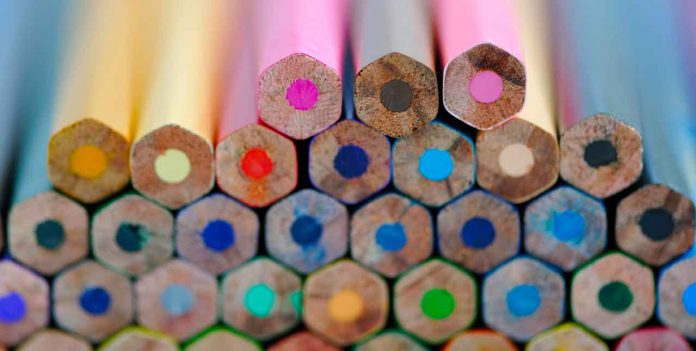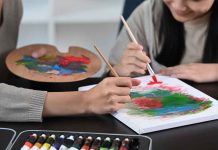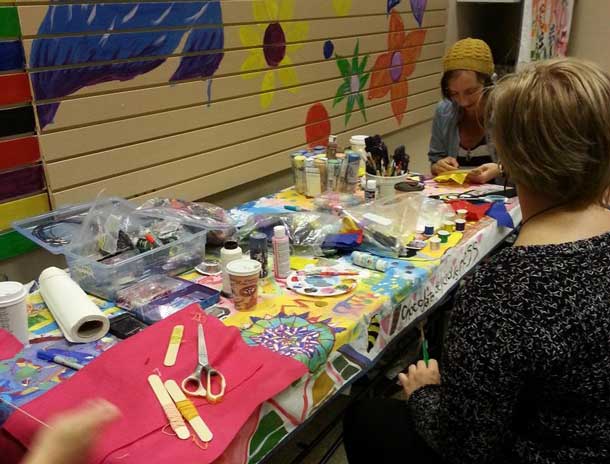Teaching pastel & pencil painting is one of the sweetest areas of learning in the visual arts. Every day, many people turn to art and are attracted to different branches of art, especially painting. However, teaching colored pencil painting in comparison with other branches of painting such as oil painting, black pen, face design, and… is new and young and needs to be recognized.
One of the benefits of a pastel & pencil painting is that the artist is free to work with pastels and motivates people to work in this field of art. Learning to paint with pastels is like embracing colors and designs. If you have people around you who have a talent for painting but are tired of the elegance and sensitivity of spending, give them a gift of a pastel package! They learn how to use pastels themselves. However, this field of art also needs some basic training and learning. In this article, we will explain six golden techniques related to teaching pastel painting and making visual miracles with yourself! Painting and drawing can be more professional if you choose a famous brand which has the best coloured pencils & pastels.
First, you need to know that we have five types of pastels: soft, semi-soft, hard, pencil, and oil. Soft and semi-soft pastels have less adhesion, which helps to make the pigments easier to combine, but hard pastels have more adhesion and are suitable for drawing details. Pencil pastels are also a good tool for drawing details. Oil pastels, due to their oil composition, create brighter and more glossy colors and are a very suitable option for effecting the design. If you want to master this style, it is better to try each of the following techniques with its types.
You can easily hold the pastel-like a pencil or pen and draw small and large dots and thin and smooth lines with its sharp parts. But you may be wondering: why should I use pastels like pencils?
Imagine that you have finished your painting, but you still feel vague when you look at it. Well, in these cases, it is better to hold the pastel-like pencil and start to identify some of the components of the painting with its sharp head. For example, tree branches or lines on the water or even marking the border of heaven and earth. We can not guess what you are painting and where you need straight lines, but you can well comment on your painting.
- Creating hatches and shading in pastel painting tutorials
One of the most widely used and important techniques in pastel painting is hatching and shading. In many cases, you will encounter another design in the corners of a particular design or role, and it is not possible to combine colors. One of the attractive and unique uses of pastels is hatching, which is characterized in these cases. In teaching pastel painting, the student realizes that not all parts have combined colors. Many people who are new to this style of painting create a combination of many colors that you do not need at all because you have shading lines.
So you do not need to combine two different colors to coordinate two different trees, for example! shading lines are so fine and close together that they do not eliminate the underlying pattern, but at the same time harmonize it with the whole painting in a subtle way. These fine lines have a definite angle that is determined by the artist himself.
Shading is one of the forms of hatching with pastels that miraculously shows them without combining colors! An incredible but realistic way. The viewer will not notice in any way that the colors are not combined and you will be spared a lot of effort to combine the colors and achieve your desired combination. In this method, hatching occurs in the form of short strokes and achieves incredible results.
- Creating colored layers on top of each other in pastel painting tutorial
In many cases, to get started, we need to have layers of different colors in the background of the painting. For example, if your painting is a blue sky or part of a calm sea, you need blue, white, light green, and yellow in the background.
But since all these colors must be smooth, they can not be combined! The basic and practical technique in teaching pastel painting is to create layers of paint on top of each other. One of the features of pastels is that without worrying about the disappearance or combination of the underlying color, you can add a layer of new color and keep the two beautiful colors together.
- Combining colors with each other in pastel painting tutorial
Combining colors in a crayons & pastelspainting tutorial is different from what you have experienced or seen in other painting styles. Pastels cannot be combined before use on the painting screen due to their special material. So the only place you can maneuver to combine them is your drawing board so it is better to be a little careful. But good news! Tools and methods you have to combine colors







